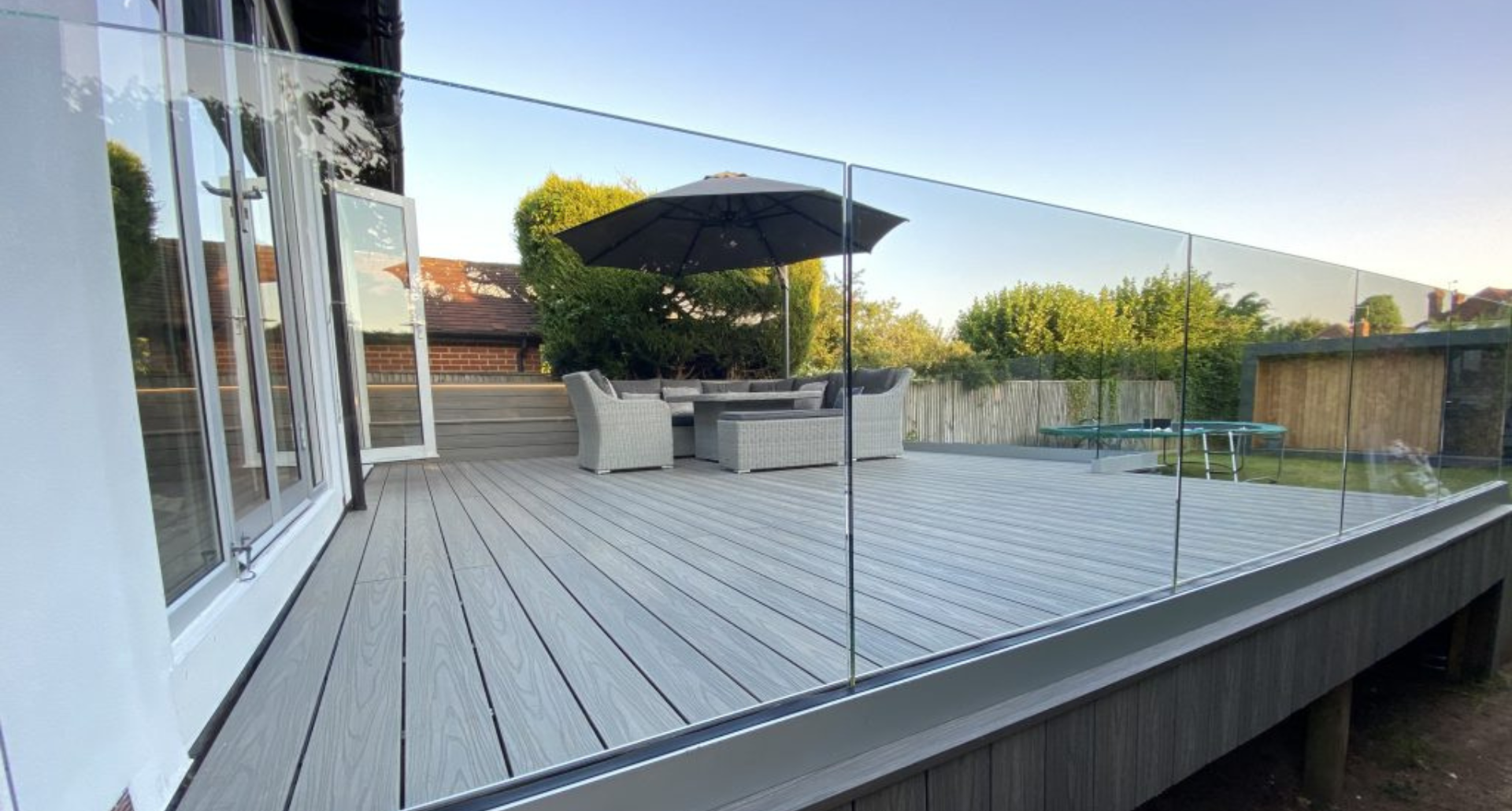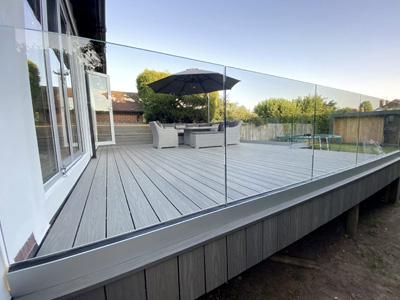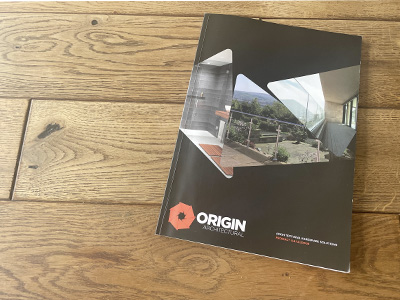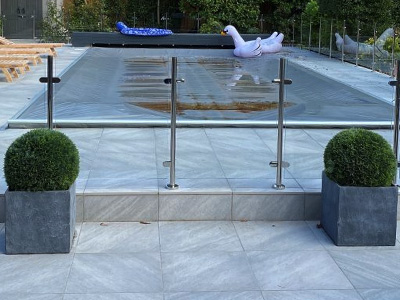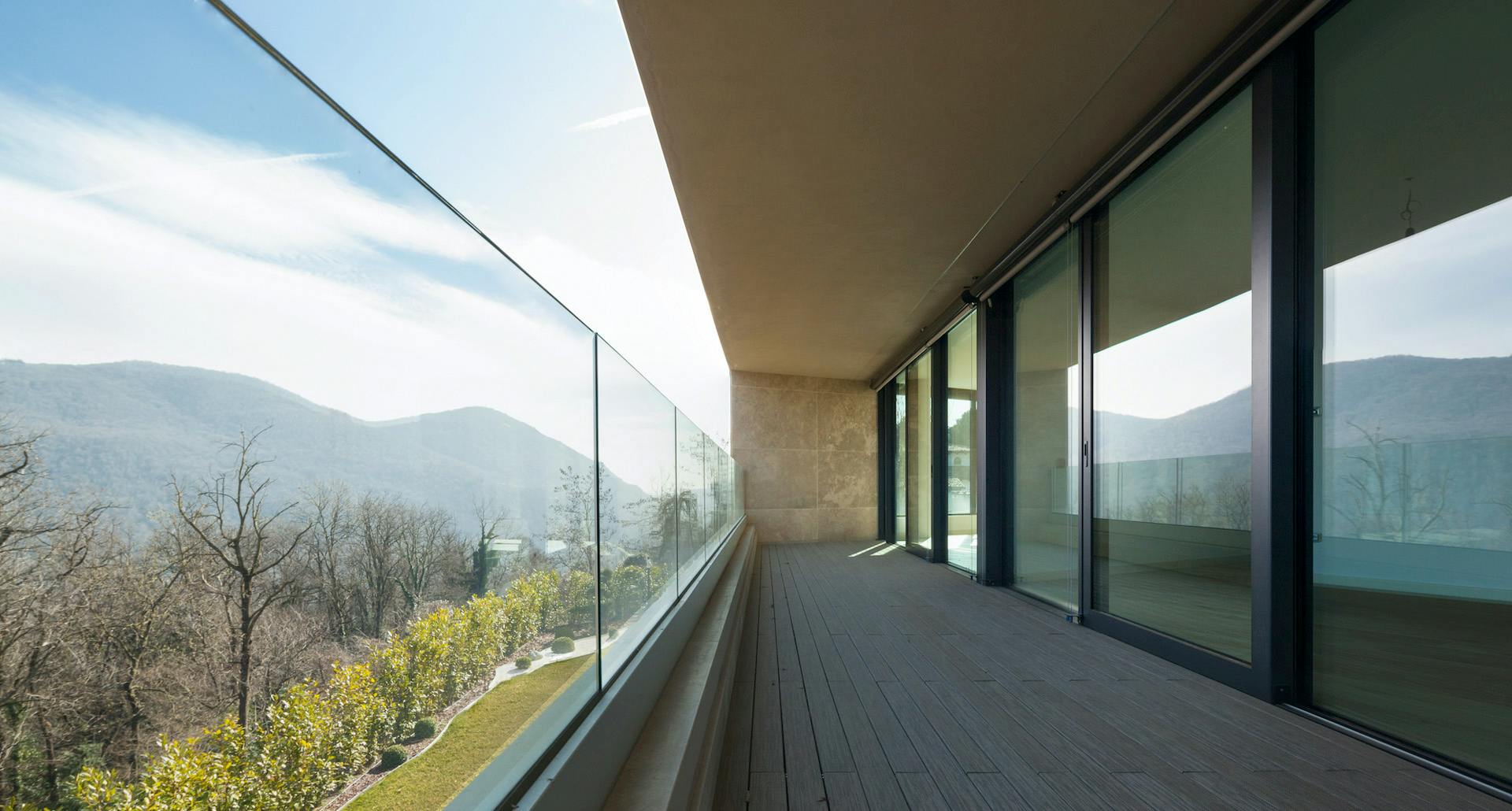Composite Decking With Glass Balustrade
UK Leading Manufacturer Of Balustrade Systems For Composite Decking
Get An Instant QuoteGet An Instant Online Quote Now On Your Decking Balustrade System
Design Your Balustrade
Design your perfect Glass Balustrade today using our online Balustrade Designer and get an instant quote.
Request Your Catalogue
Download your free catalogue to help you choose the perfect balustrade solution for your project.
Composite Decking with Glass Balustrade
Here at Origin Architectural, we have the perfect solution to finish your composite decking with a stylish balustrade. All of our metal work is sold from stock and can delivered within a couple of days. All of our balustrade systems are fully tested, comply with Building Regulations, and are sold with a guarantee. Our systems are easy to fit to composite decking and can be completed by any DIY enthusiast. Just take a look at the reviews of our customers that have fitted to composite decking. They are delighted with the results.
Types Of Composite Balustrade System

Composite Decking Glass With Frameless Glass Balustrade
Our frameless channel systems are easy to install and offer a completely frameless look, making them one of our most popular balustrade solutions. You can always add a top stainless steel handrail or use our glass stiffeners. If your balustrade is protecting a fall of 600mm or more you should use a laminate glass (two pieces of glass bonded together) if you are not opting for a top handrail.
Composite Decking Glass Balustrade With Handrail
Easy to install and cost effective, our stainless steel posts are one of our most popular solutions. The posts are completely pre-fabricated. When they arrive on site, all you need do is secure them with 4 x fixings through the base plate. If your balustrade is protecting a fall of 600mm or more, having the handrail will ensure that you are fully compliant with Building Regulations.
Composite Decking Glass Balustrade Without Handrail
For uninterrupted views from your deck, you can opt for our stainless steel posts without a handrail. Simple to install and made from an outdoor grade of stainless steel, they offer both style and security. If your deck is less than 600mm from the ground, you can use 10mm toughened glass. If the deck is more than 600mm from the ground, we'd recommend using laminate glass, two pieces of glass bonded together.
Composite Decking With Wire Rope Balustrade
Many of our customers want the low maintenance solution of a wire rope balustrade system. These balustrade systems are easy to install and the posts can be configured to meet any dimension of the composite deck. The stainless steel posts are from an outdoor grade of stainless steel. The wire rope balustrade systems are very durable making them a popular choice for gardens and outdoor spaces.Frequently Asked Questions
It is no problem to use any existing posts that are on your decking. You can secure the glass with flat backed clamps with are attached to the posts. The key thing to watch out for is the distance between the posts. There should not be much more than a meter between each post. If there is much more than a meter, you risk putting too much pressure on the glass which can lead to it falling away from its fixing.
Much of the cost of any glass balustrade is the glass itself. Toughened glass is noticeably cheaper than laminate glass. A stainless steel post and rail system will usually require 10mm toughened glass where as frameless channel system will require a laminate glass. A post and rail system is subsequently noticeably cheaper than a frameless system.
You need to ensure that there is a sufficient gap from the edge of the decking to the out edge of your metal work. We would usually recommend at least 100mm.
The short answer is yes you can! Any balustrade is only as good as the material that it is fixed to. You should ensure that the decking is sufficiently braced to give you a secure fixing. By braced we simply mean having something beneath the composite decking to ensure that you can get a secure fixing. A balustrade acts like a lever. A small movement at the bottom of the balustrade can lead to a far greater movement at the top of the glass
To comply with building regulations, if the drop from the finished floor level to the ground is 600mm or more, you should either have a handrail or laminate glass. Laminate glass will have a noticeable effect on the price. If price is important to you, we recommend using a handrail. Composite decking is not as secure a fixing to steel or concrete. If you are using frameless channel, our recommendation when fixing to composite decking is to secure the top of the glass with either glass stiffeners (if you want to maintain the frameless look) or a handrail. This will help eliminate any movement in the glass and assist you in aligning the glass on any longer run.
Consider a laminate glass or a handrail! To comply with building regulations, if the drop from finished floor level to the ground is 600mm or more, you should either have a handrail or laminate glass. Laminate glass will have a noticeable effect on the price. If price is important to you, we recommend using a handrail. If you are using frameless channel, our recommendation when fixing to composite decking is to secure the top of the glass with either glass stiffeners (if you want to maintain the frameless look) or a handrail. This will help eliminate any movement in the glass and assist you in aligning the glass on any longer run.
Read Our Recent Articles On Glass Balustrade
Balustrade Regulations UK: Important Regs to Understand
How thick should the glass on a glass balustrade be?
Why are Glass Balustrades a Good Choice for Coastal Properties?
Balustrade Technical Support
GOT A QUESTION?
Our experienced team are always happy help
Just fill in this contact form and we'll get back to you as soon as possible. Alternatively, you can call get in touch using the methods below:Got a Question?
Our friendly and experienced UK customer service team are on hand to help and answer any questions you may have via phone or email.

